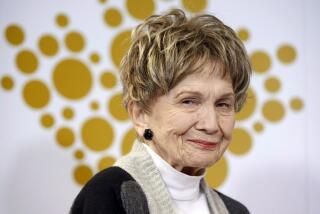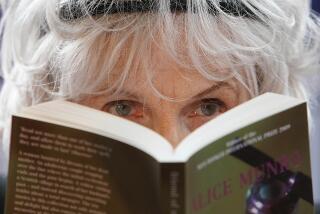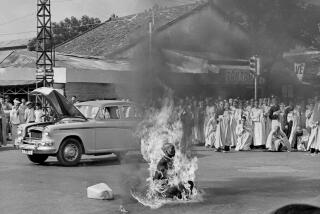Faith McNulty, 86; âBurning Bedâ Author Wrote for the New Yorker
Faith McNulty, a New Yorker magazine writer who often wrote about country life but who was best known for her nonfiction book, âThe Burning Bed,â which called attention to domestic violence, died April 10. She was 86.
McNulty had been in failing health since she suffered a stroke about a year ago. She died at home on her farm in Wakefield, R.I., according to her sister, Betsy Keiffer.
The writerâs 1980 bestseller was made into a television movie starring Farrah Fawcett in 1984. It followed the case of Francine Hughes, who set fire to the bedroom where her husband was sleeping and then drove to the police station to turn herself in.
Hughesâ husband, who for 13 years had regularly beaten and humiliated her, died in the fire. A jury concluded that Hughes had been temporarily insane and acquitted her.
McNulty had been asked by an editor to write about Hughes, a departure from her usual subjects.
âI was scared to death, as usual,â she told the Providence Journal in 2001. âEvery time I walked into my office to start, I felt a little faint, and Iâd leave.â
When she finally completed the book, reviews were positive.
âMcNultyâs controlled narrative makes an unimaginable life comprehensible, and the trial verdict makes one want to cheer,â Walter Clemons wrote in Newsweek magazine.
Most often, McNulty wrote about the pleasures of country life and rural animals. A number of her books were for children, including âHow to Dig a Hole to the Other Side of the Worldâ (1979) and âWhen I Lived With Batsâ (1998), which was based on her own childhood experiences on her grandparentsâ farm in Rhode Island.
The mice, cats, woodchucks and other animals around her house became characters in her books. She had nursed some of them back to health after they broke a wing or a foot.
McNulty also wrote books about nature for adults, including âThe Whooping Crane: The Bird that Defies Extinctionâ (1966), which told the history of the endangered birds and urged conservation efforts for them. She also compiled a collection, âThe Wildlife Storiesâ (1980), that included a number of her fiction and nonfiction pieces from the New Yorker.
She began her career as a journalist for the New York Daily News and later worked at Life magazine. Her first short story appeared in the New Yorker in 1943. Ten years later, she joined the staff as a writer for the âTalk of the Townâ section.
Until 1991, she continued to write occasionally for the magazine, including an annual review of childrenâs books. During the 1990s, McNulty wrote an animal rescue column for the Providence Journal to encourage the adoption of the strays that lived in the animal shelter where she volunteered.
âIt speaks to the kind of person she was, an urban sophisticate who knew about field mice and whooping cranes,â said Gerry Goldstein, McNultyâs editor at the Journal, who is now retired.
Born Faith Corrigan on Nov. 28, 1918, in New York City, McNulty was the daughter of a municipal court judge. Her mother helped to found a southern Rhode Island chapter of the Animal Rescue League. Summers that were spent on her grandparentsâ farm turned Faith into a nature lover.
She attended Barnard College but dropped out during her first year and began working as a journalist. During World War II she worked for the Office of War Information in London and then returned to New York City.
In 1945 she married John McNulty, a well-known writer for the New Yorker. In the early 1950s the couple bought their farm, âBittersweet,â which reawakened her interest in country life.
She rode horses nearly every day, swam in a local pond, raised Christmas trees and was known as something of an eccentric.
âEven at parties sheâd wear her bluejean skirt and a pilled sweater with cat hair on it,â said Karen Lee Ziner, a staff writer for the Providence Journal who once wrote a feature story on McNulty and later became a friend. âShe wasnât a fashion plate but she was spunky.â
After McNultyâs husband died in 1956, she married Richard Martin, a set designer, who died in 1984. An earlier marriage had ended in divorce.
McNulty is survived by her sister, a son and four grandchildren.
More to Read
Sign up for our Book Club newsletter
Get the latest news, events and more from the Los Angeles Times Book Club, and help us get L.A. reading and talking.
You may occasionally receive promotional content from the Los Angeles Times.







